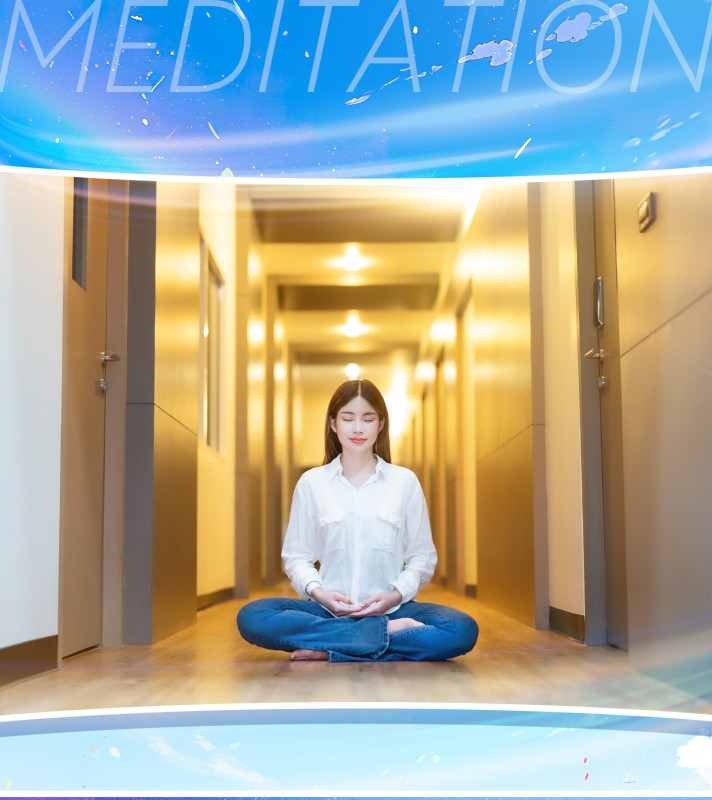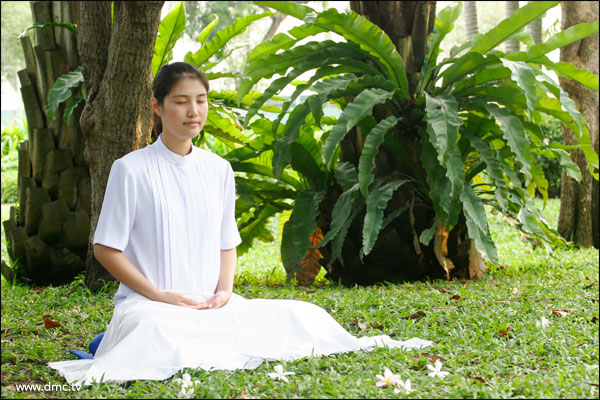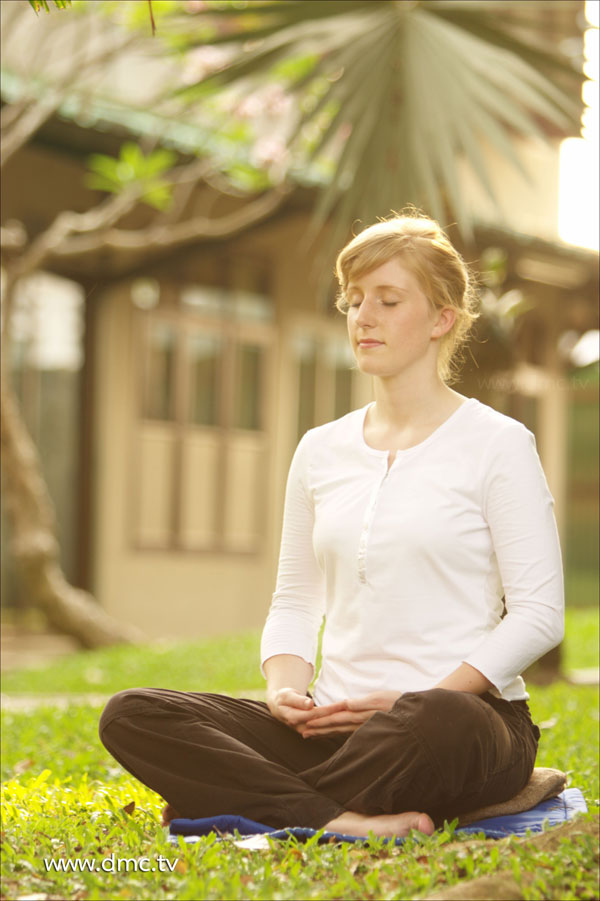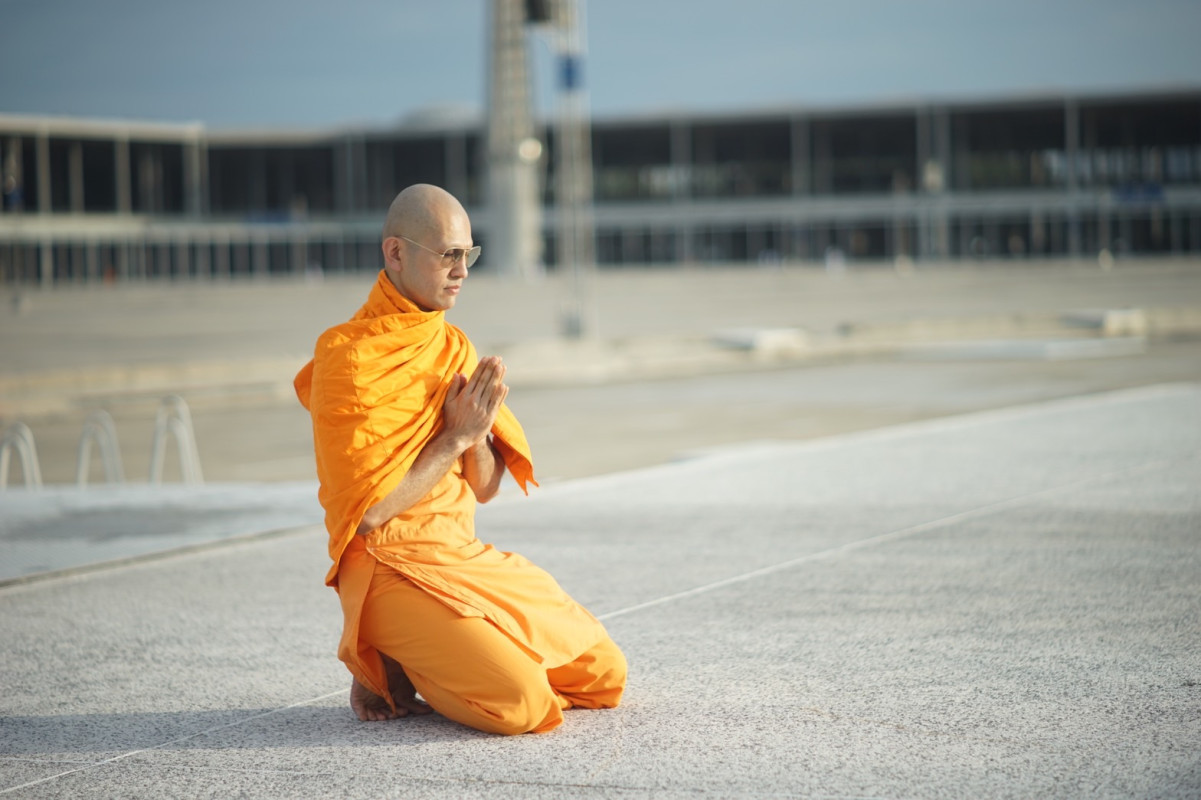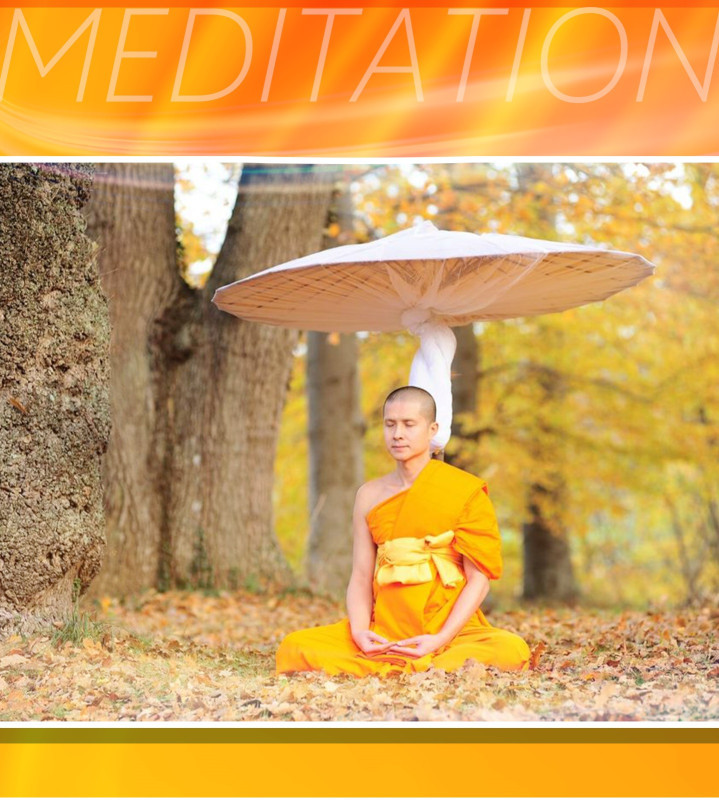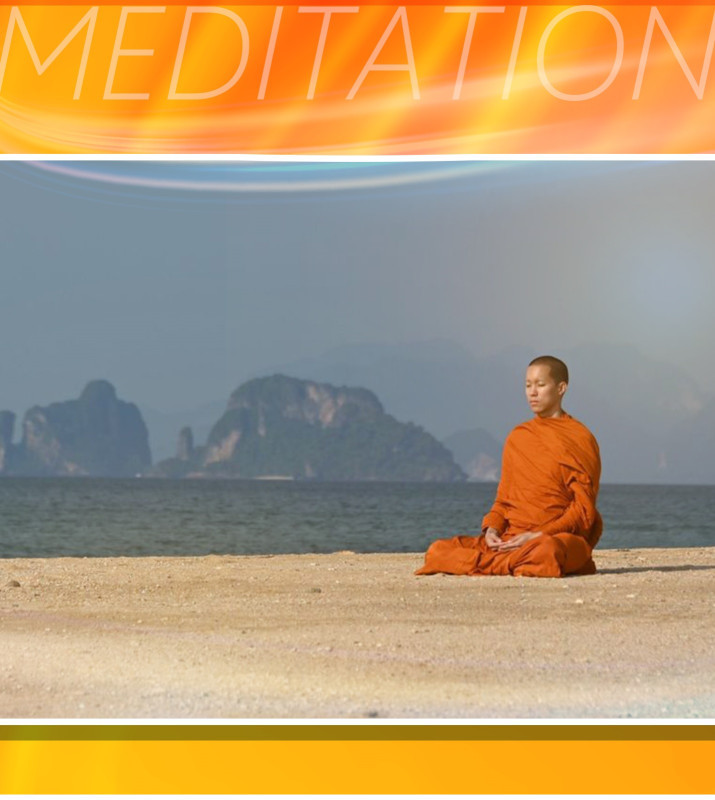Meditation Part 2: Beginning Meditation Practice
Meditation
Meditation is a path to inner peace.
It follows clear and simple steps,
and can be practiced by anyone — regardless of gender, age, education, or social status.
Meditation is the practice of training the mind to become steady and unified,so that it is not swayed by the various emotions that come to affect it.If we can train our minds to maintain concentration continuously,meditation will bring about true happiness—a deep sense of peace that arises from a mind that is still and centered within.
In this chapter, we will begin practicing sitting meditation. As we learned in the previous chapter, we are made up of two parts: the body and the mind.Meditation, in essence, is the training of the mind.However, if we want to practice for long periods and do so consistently,we must also prepare our external environment, our body, and our mind to support the practice.
Start by finding a quiet place.It could be a silent room without too much noise or disturbance,with good ventilation and a comfortable atmosphere.Or it might be a peaceful spot like a garden, near a waterfall,or any quiet place where you feel calm and at ease.But if you truly cannot find a quiet location,you can still practice meditation — even in an environment that isn’t ideal.
Once you’ve found a quiet and peaceful place, prepare your body by refreshing yourself.You might splash some water on your face, or even take a shower to feel more awake and energized.
Next, sit in the cross-legged position.Place your right leg over your left, and your right hand over your left hand,
resting both hands gently on your lap.Keep your back upright but relaxed.This is the standard meditation posture,
which allows you to sit for long periods—hours at a time—without needing to change your position.With regular practice, you’ll be able to sit in this posture comfortably and with ease.
However, if you’re not able to sit this way at first—especially if you’ve never sat on the floor before—you might find that your knees lift up, or you may feel tightness in your thighs.When you try to sit upright, your muscles and tendons may not yet be accustomed, causing your body to feel unbalanced, as if leaning slightly backward.This can make you tense your thigh muscles continuously,which can lead to discomfort and soreness over time.
An easy way to help improve your sitting postureis to fold a towel or use a cushion, and place it under your tailbone.This will slightly elevate your hips, so that your knees won't rise up as much as before.You can adjust the height of the cushion or folded towel until your body feels balanced and stable.
If you are older, or if your body is not ready to sit on the floor, you can absolutely sit on a chair instead.The purpose of maintaining correct posture is to keep the body balanced and as still as possible,allowing good circulation of blood and energy.This helps you to sustain your meditation without being distracted by physical discomfort.If your meditation becomes deep and your mind becomes very still,you will no longer pay attention to your body —you may even forget your body completely.
Meditation
Place the right leg over the left leg. Place the right hand over the left hand,
with the fingers of the right hand touching the left thumb.
Then, gently close your eyes — just enough to feel comfortable.
So, to begin, place your right leg over your left leg,place your right hand over your left hand,and let the fingers of your right hand touch the left thumb.Then, gently close your eyes, just enough to feel comfortable—similar to the moment when you're about to fall asleep.Don’t squeeze your eyelids. Don’t press on your eyeballs.After that, slowly relax every part of your body,starting perhaps by taking a deep breath in,then slowly exhale.Use your mind to scan through your body,starting from your head — let it relax,neck — no tension, relax comfortably,both shoulders, upper arms, all the way to your fingertips — relaxed and at ease.Then move on to your torso,stomach — no tightness, gently relaxed,thighs — all the way down to your toes — relaxed and comfortable.Let every part of your body feel relaxed and at ease,with no part of the body feeling tense, stiff, or stressed.
Then, make your mind feel cool and at ease,by letting go of all stories and matters —whether they’re about work, home, school, your car, family, people, pets, or beloved possessions,or any worries you may have.Let them go for now.At this moment, you are about to train your mind to enter meditation,so it is necessary to set aside all those things for the time being.
Now, bring your mind to the center of your abdomen,any spot within your belly that feels comfortable to you.Gently place your mind at the center,which is the center point of the body.Keep your mind cool and relaxed at the center of the abdomen.No need to think or do anything —just rest your mind softly and comfortably at the center.Even if images you’re familiar with appear,or sounds you recognize echo in your mind,do not pay attention to them.Just keep your awareness lightly and gently at the center of your belly— calmly, peacefully, and without any sense of urgency.There is nothing to do at this moment, and nothing outside needs your attention.Feel your mind touching the center of the abdomen lightly and comfortably.Even if images, sounds, or thoughts arise,don’t focus on them, don’t bring them into your inner dialogue.Just let them pass.Let your awareness rest lightly at the center,continuously, for as long as you can —calmly, gently, and without rushing.Do not accidentally strain your eyes.Do not tense up.Do not try to force your focus at the center using physical effort.You don’t need to pay attention to your body.Let it relax.And let your mind rest there too —calmly, softly, and gently…calm… calm… and calm.
Today, we have learned about the meditation sitting posture,how to adjust the body, and the basic way to place the mind.In the next chapter, we will continue our meditation practice,by exploring in more detail how to close the eyes,
how to place the mind,and how to develop a deeper understanding of continuous concentration.
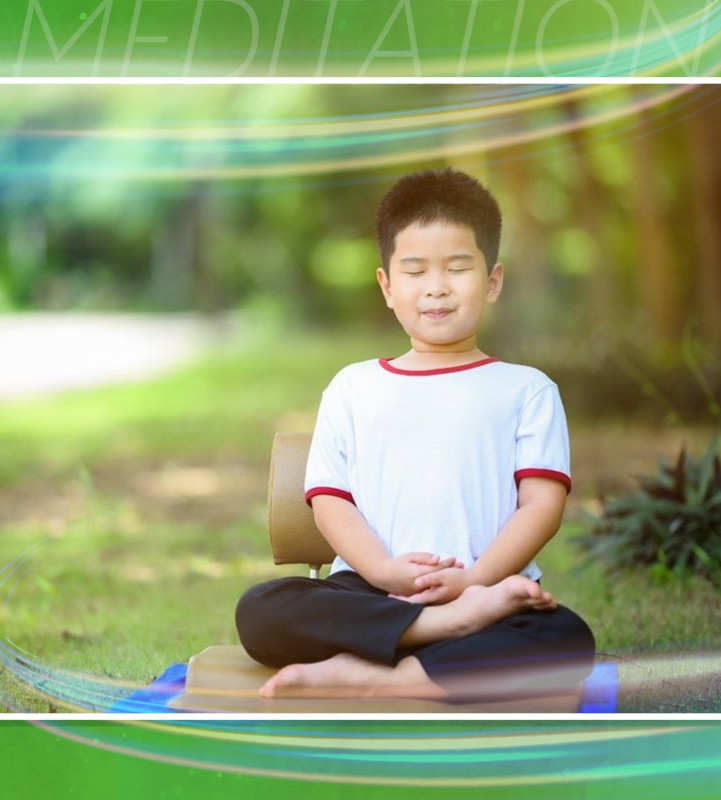
 English
English
 ภาษาไทย
ภาษาไทย

